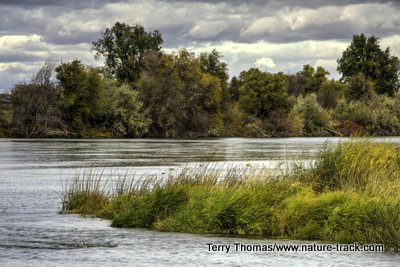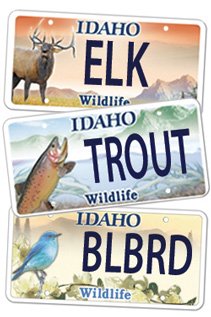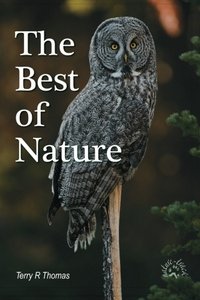Wildlife Management Area
State Tour Part 2

The confluence of the Boise River with the Snake River is just one of the many cool things you will find on the Fort Boise WMA near Parma on the Oregon/Idaho state line.
Over the past week we have hopscotched across southern Idaho visiting the state’s wildlife management areas (WMA). We have spent as little as a couple of hours to a day exploring each one. That has not been nearly enough time to do much more than get acquainted, leaving me frustrated.
With just a week to go, it is evident that I did not budget enough time for this trip. With 32 WMAs, it doesn’t take a math whiz to conclude that even a cursory visit to each would take more than two weeks. And that doesn’t include the travel time.
Until today we have been lucky, catching weather decent enough to allow for extensive filming. Today, however, we arrived at Cecil D. Andrus WMA west of Cambridge with a storm on our heels and that has kept the drone grounded and the camera safe in the truck. The autumn colors from Cambridge to the WMA rival New England though and are stunning even in the rain and snow.
We have discovered a wonderful treasure in our travels though, finding that each WMA is unique and beautiful. We are already planning an extended springtime trip back to the Hagerman Valley to more thoroughly explore Niagara Springs, Hagerman and Billingsley Creek WMAs with a several day-long stop at Big Cottonwood WMA near Oakley.
We spent a night at C.J. Strike Reservoir once we left Hagerman. This reservoir was made by the construction of a dam across the Snake River just below the confluence of the Bruneau River and backs up into both the Snake and Bruneau channels. Idaho Power owns the dam and shares in the management of the recreation on the reservoir.
The C.J. Strike WMA surrounds this large impoundment and if you are a boater or a fisherman, this may be paradise. There are plenty of boat ramps and several fee campgrounds. At first, we were pretty disappointed though. We were looking for scenery and wildlife to photograph and there didn’t seem to be much of either.
Toward the end of the day though, we discovered both by driving down the Jack’s Creek access point. Here, there are designated improved campsites with fire rings and shared pit toilets but there is no fee. We could see the Bruneau Flats, the tailwaters of the Bruneau arm of the reservoir and the extensive wetland there. We spent our remaining time poking around this segment of the WMA and enjoyed it a lot.
While we stayed with our son and his family in Caldwell, we visited Montour WMA east of Emmett on the Black Canyon of the Payette, Fort Boise WMA near Parma and Payette WMA near New Plymouth. Both Montour and Payette WMAs are fairly small and each garnered only an afternoon.
Fort Boise WMA is larger and much more active. There were a lot of waterfowl and pheasant hunters as well as bird watchers. Cathy was so impressed with the wildlife viewing tower, the campsites (three different areas) and roads that were relatively smooth that she declared it the best managed WMA so far. Ouch.
We have seven days to cover two more regions: Clearwater and Panhandle. Since we have lived in the Clearwater Region, we will likely spend the bulk of the time exploring the five WMAs in the Panhandle which will take us right up to the border with Canada. We have high expectations as North Idaho is beautiful any time of year.
Help Idaho Wildlife
When we traveled across the state in October 2017, most of the vehicles we saw using the wildlife management areas did not have wildlife plates. Buying wildlife plates is a great way for non-hunters and hunters alike to support wildlife-based recreation like birding.
C'mon folks, let's help Idaho's wildlife by proudly buying and displaying a wildlife license plate on each of our vehicles!
See below for information on Idaho plates. Most states have wildlife plates so if you live outside Idaho, check with your state's wildlife department or vehicle licensing division for availability of state wildlife plates where you live.
And tell them that you heard about it from Nature-track.com!

Wildlife License Plates
Great news! as of 2024, there are three NEW designs for license plates. They still are bluebird, cutthroat trout and elk, but they are beautiful.
Idaho Wildlife license plates provide essential funding that benefits the great diversity of native plants and wildlife that are not hunted, fished or trapped—over 10,000 species or 98% of Idaho’s species diversity. Game species that share the same habitats (such as elk, deer, antelope, sage-grouse, salmon, trout) also benefit from these specialty plates.
No state tax dollars are provided for wildlife diversity, conservation education and recreation programs. Neither are any revenues from the sale of hunting or fishing licenses spent on nongame species. Instead, these species depend on direct donations, federal grants, fundraising initiatives—and the Idaho Wildlife license plates.
Both my vehicles have Bluebird Plates. I prefer the bluebird because the nongame program gets 70 percent of the money from bluebird plates, but only 60 percent of the money from elk and trout plates - 10 percent of the money from elk plates supports wildlife disease monitoring and testing programs (to benefit the livestock industry) and 10 percent from cutthroat plates supports non-motorized boat access.
Incidentally, in 2014, the Idaho Legislature denied the Department of Fish and Game the ability to add new plates or even to change the name of the elk and cutthroat plates (very specific) to wildlife and fish plates, a move that would have allowed for changing images occasionally and generating more revenue. It would seem that they believe that we Idahoans don't want a well funded wildlife program.
I think it is time we let the Legislature know that Idahoan support wildlife funding and that we would like to see these generic plates come to fruition.

"WOW. What a phenomenal piece you wrote. You are amazing." Jennifer Jackson
That is embarrassing, but actually a fairly typical response to my nature essays. Since The Best of Nature is created from the very best of 16 years of these nature essays published weekly in the Idaho Falls Post Register (online readership 70,000), it is a fine read. It covers a wide variety of topics including humorous glimpses of nature, philosophy, natural history, and conservation. Readers praise the style, breadth of subject matter and my ability to communicate complex and emotional topics in a relaxed and understandable manner.
Everyone can find something to love in this book. From teenagers to octogenarians, from the coffee shop to the school room, these nature essays are widely read and enjoyed.
Some of the essays here are my personal favorites, others seemed to strike a chord with readers. Most have an important message or lesson that will resonate with you. They are written with a goal to simultaneously entertain and educate about the wonderful workings of nature. Some will make you laugh out loud and others will bring a tear to the eye and warm your heart.
Readers Write:
"You hit a home run with your article on, Big Questions in Nature. It should be required reading for everyone who has lost touch with nature...great job!" Joe Chapman
"We enjoyed your column, Bloom Where Planted. Some of the best writing yet. The Post Register is fortunate to have your weekly columns." Lou Griffin.
To read more and to order a copy, click here or get the Kindle version
Copies are also available at:
Post Register
Island Park Builders Supply (upstairs)
Barnes and Noble in Idaho Falls
Harriman State Park, Island Park
Museum of Idaho
Valley Books, Jackson Wyoming
Avocet Corner Bookstore, Bear River National Wildlife Refuge, Brigham City, Utah
Craters of the Moon National Monument Bookstore, Arco, Idaho